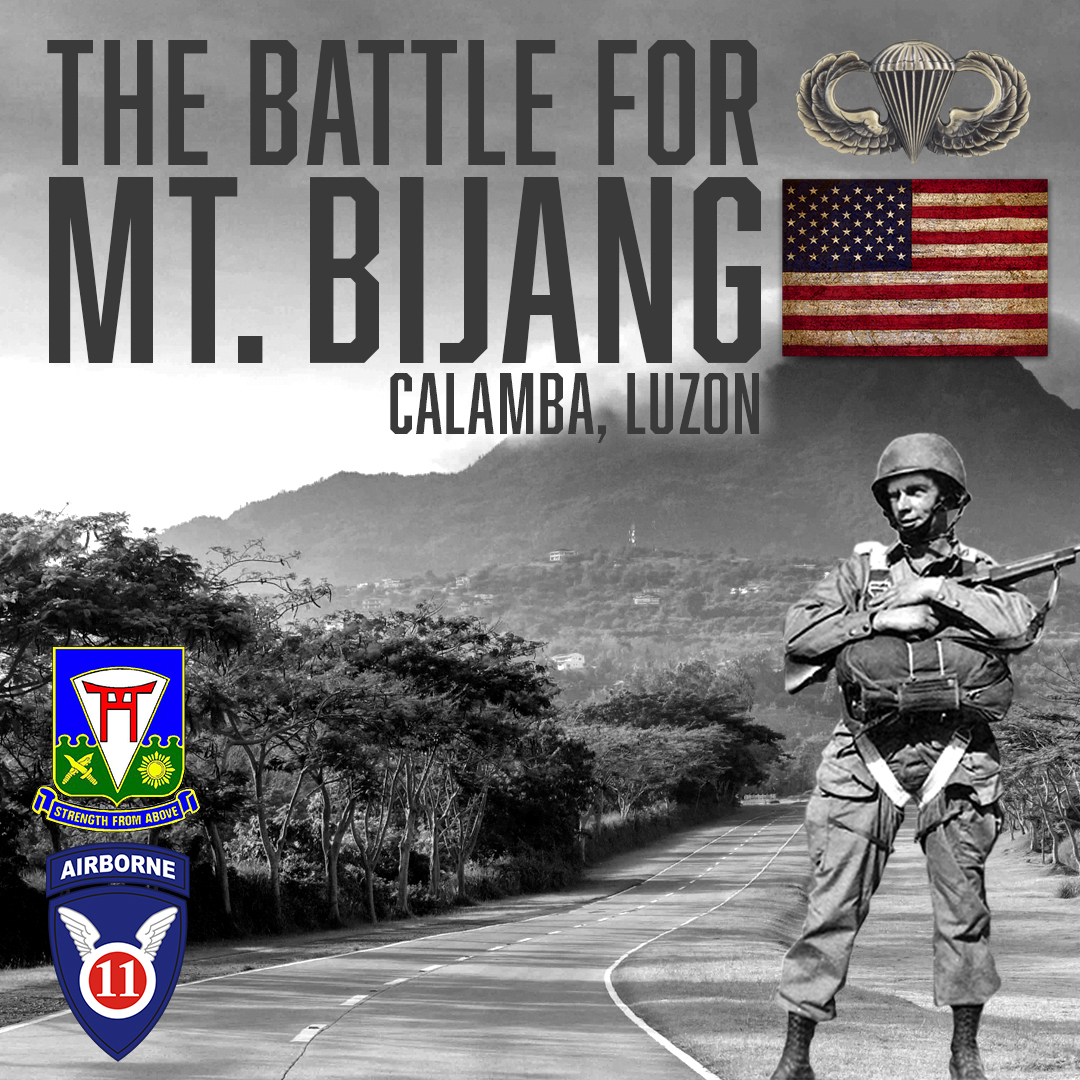The Battle for Luzon's Mount Bijang (also Bijiang), located about 40 miles south-east of Manila is one of those obscure combat engagements that the world has passed over simply because World War II was full of tens of thousands of such operations on land, the seas and in the air.
As any military historian (or even casual student) can tell you, these battles were often fought by men, frequently young men, who found deep wells of courage in the heat of battle in a mixture of adrenaline, duty, will, and an unrelenting desire to do their best for their buddies.
 The Battle for Mt. Bijang is the story of one understrength parachute company in their fight to take and retain what their company commander called, "an insignificant piece of real estate" against an estimated 300 Japanese defenders. I have heard from the paratroopers who were there, including that company commander, and from my own grandfather, 1LT Andrew Carrico III who was serving as Company Executive Officer at the time and was wounded so badly that some in D Company thought he was killed. The Battle for Mt. Bijang was one of those "small-unit operations" that displays the effects of superb leadership, skilled NCOs, determined frontline fighters and one unit's unwillingness to let each other down.
The Battle for Mt. Bijang is the story of one understrength parachute company in their fight to take and retain what their company commander called, "an insignificant piece of real estate" against an estimated 300 Japanese defenders. I have heard from the paratroopers who were there, including that company commander, and from my own grandfather, 1LT Andrew Carrico III who was serving as Company Executive Officer at the time and was wounded so badly that some in D Company thought he was killed. The Battle for Mt. Bijang was one of those "small-unit operations" that displays the effects of superb leadership, skilled NCOs, determined frontline fighters and one unit's unwillingness to let each other down.
Battle Background
On February 3, 1945, the 511th Parachute Infantry Regiment dropped on Luzon's Tagaytay Ridge just south of Manila, then pushed north up into the city. Grandpa's D Company, the same unit that fought the Battle for Mt. Bijang, was selected to spearhead the 11th Airborne Division's drive into Manila and Grandpa explained, "Here we are, a little old airborne division with its 8,000 men attacking Manila from the South and the 1st Calvary Division with its 20,000 men attacking from the North and (my) 1st Platoon, D Company out in front of everybody! Quite an Experience."
He then chuckled and said, "My squad leaders all asked, 'Why do we get all the dirty jobs?!'"
The Battle for Manila would prove to be bloody for Major-General Joseph May Swing's understrength 11th Airborne Division, including D Company which would be the first Angels to encounter the enemy at Imus, just outside Manila proper (a story for another day!). In 1949, COL Edward H. "Slugger" Lahti, CO of the 511th PIR, explained that the regiment's 2nd Battalion (which included D Company) had landed on Tagaytay Ridge on February 3, 1945 with 502 men. By February 10, one week later, the battalion was down to just 187 effective officers and enlisted men.
On February 10, the battle-worn men of D Company were given a break from the lines and twenty-three-year-old Captain Stephen Edward "Rusty" Cavanaugh selected an assembly point for D Company several hundred yards to the rear near the Parañaque Bridge where they could clean up and get a hot meal. As his troopers moved back, the fatigued captain grew frustrated with what appeared to be a delay in assembly. Nerves frayed from a week of combat (during which he slept very little), Cavanaugh chewed out his new 1SGT Paul R. Farnsworth for the men’s sluggishness.
With a pained look in his eyes, Farnsworth quietly replied, “Sir, that’s all there is.” Everyone else was gone.